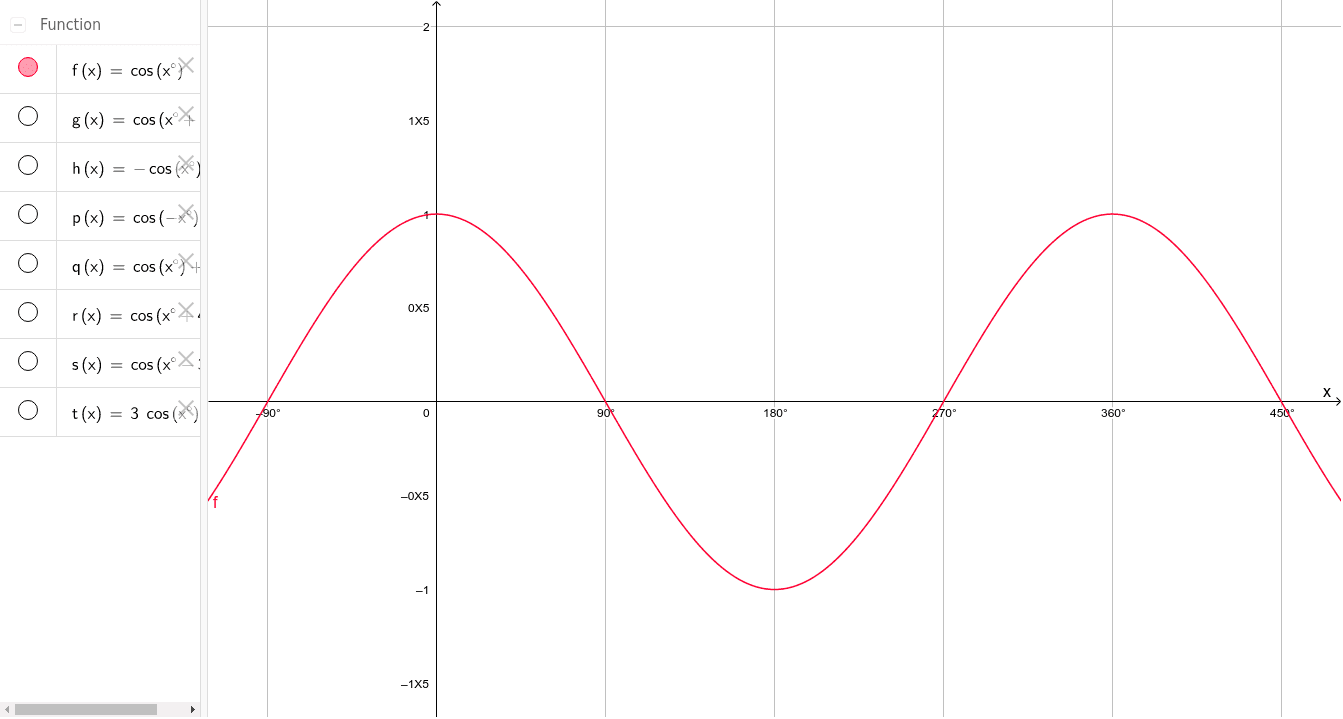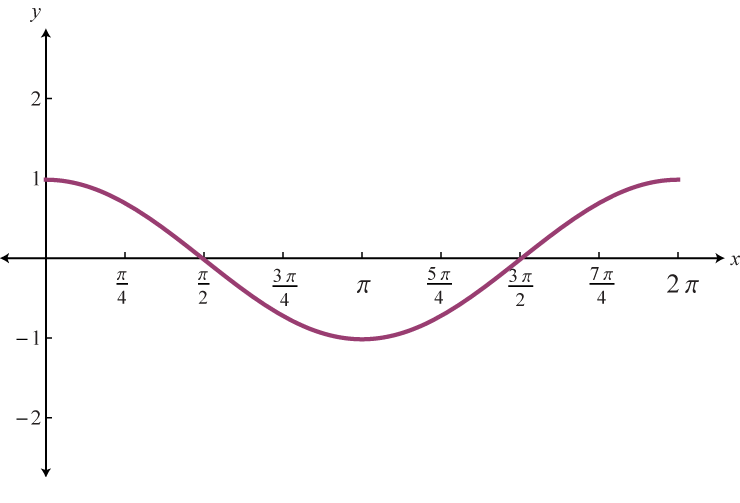
The domain of cos x is all real numbers and the range is -1,1. The cosine function is an even function because cos (x) cos x. This video will explain how the formulas work. The cosine graph repeats itself after 2, which suggests the function is periodic with a period of 2.
#COSINE GRAPH HOW TO#
We discuss how to find the amplitude, period, phase shift, and vertical shift and look at tips for making gr. This is an exploration for Advanced Algebra or Precalculus teachers who have introduced their students to the basic sine and cosine graphs and now want their. This formula which connects these three is: We discuss how to graph Sine and Cosine graphs. We are given the hypotenuse and need to find the adjacent side. The tangent of the angle = the length of the opposite sideįind the length of side x in the diagram below: The cosine of the angle = the length of the adjacent side The sine of the angle = the length of the opposite side

In any right angled triangle, for any angle: The opposite side is opposite the angle in question. The adjacent side is the side which is between the angle in question and the right angle. Boost your Algebra grade with Graphing Cosine Functions. Get instant feedback, extra help and step-by-step explanations. The hypotenuse of a right angled triangle is the longest side, which is the one opposite the right angle. Practice Graphing Cosine Functions with practice problems and explanations.

Thus, the largest possible value is ∣ a ∣ + d |a| + d ∣ a ∣ + d and the smallest possible value is − ∣ a ∣ + d - |a| + d − ∣ a ∣ + d.This section looks at Sin, Cos and Tan within the field of trigonometry.Ī right-angled triangle is a triangle in which one of the angles is a right-angle. Since − 1 ≤ sin θ ≤ 1 -1 \leq \sin \theta \leq 1 − 1 ≤ sin θ ≤ 1, it follows that − ∣ a ∣ ≤ a sin ( b x − c ) ≤ ∣ a ∣ -|a| \leq a \sin (bx -c) \leq |a| − ∣ a ∣ ≤ a sin ( b x − c ) ≤ ∣ a ∣. Y = a sin ( b x − c ) + d y = a \sin (b x - c) + d y = a sin ( b x − c ) + dįor constants a, b, c, a,b,c, a, b, c, and d d d, what are the largest and smallest possible values of y ? y? y ? To find the equation of sine waves given the graph, find the amplitude which is half the distance between the maximum and minimum.

If A and B are 1, both graphs have an amplitude of 1 and a period of 2. The coefficients A and B in y Asin (Bx) or y Acos (Bx) each have a different effect on the graph.

Similarly, plotting the values of the cosine function for a large number of angles forms a curve called the cosine curve: Examples, videos, worksheets, solutions, and activities to help Algebra 2 students learn how to transform sine and cosine graphs. If we plot the values of the sine function for a large number of angles θ \theta θ, we see that the points form a curve called the sine curve: For example, sin 0 = 0, \sin 0=0, sin 0 = 0, implying that the point ( 0, 0 ) (0,0) ( 0, 0 ) is a point on the sine graph. In general, for y k + cos x, the graph shifts up by k units when k > 0 and shifts down by k units when k < 0. In the graph of the sine function, the x x x-axis represents values of θ \theta θ and the y y y-axis represents values of sin θ \sin \theta sin θ.


 0 kommentar(er)
0 kommentar(er)
